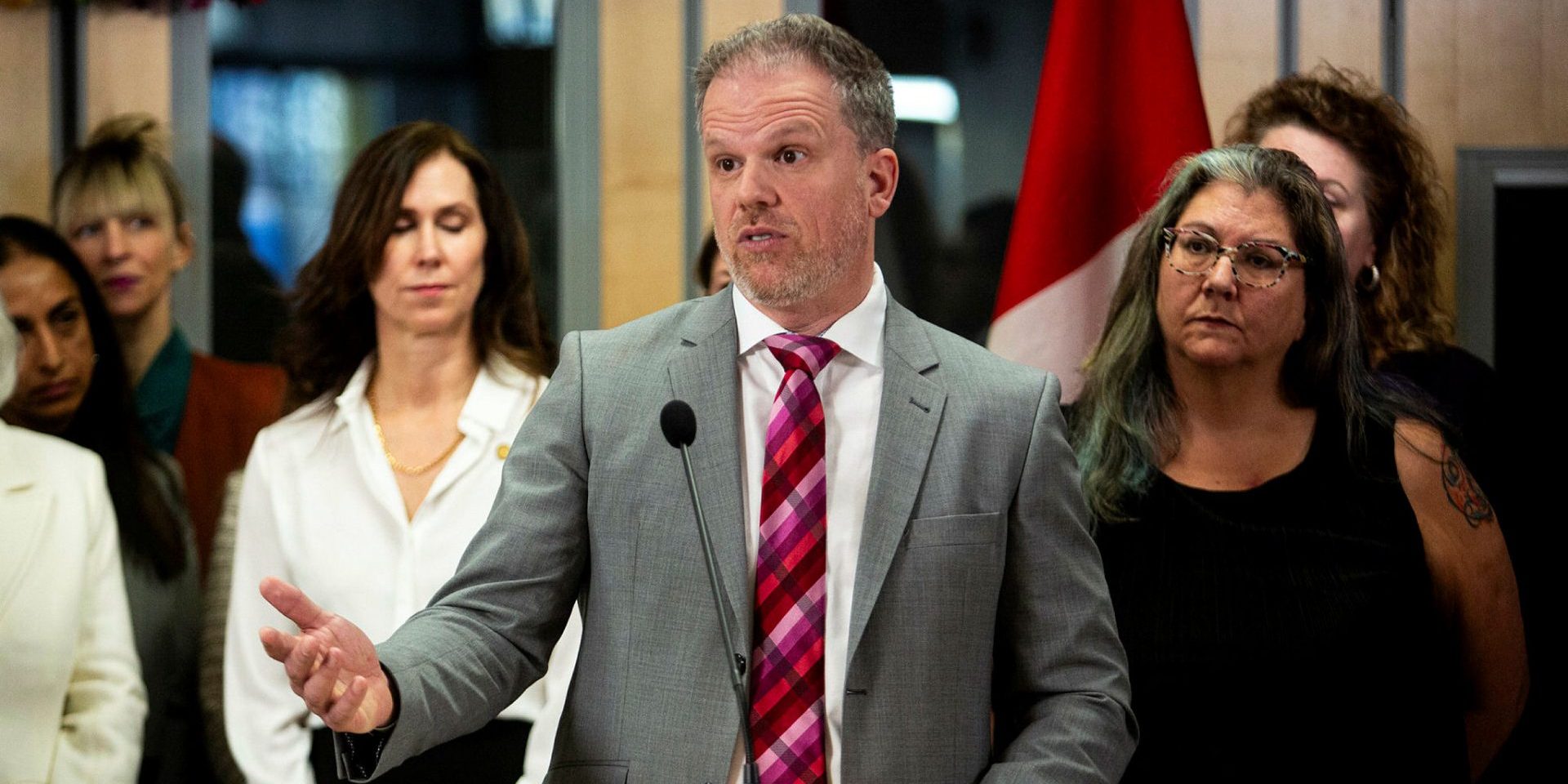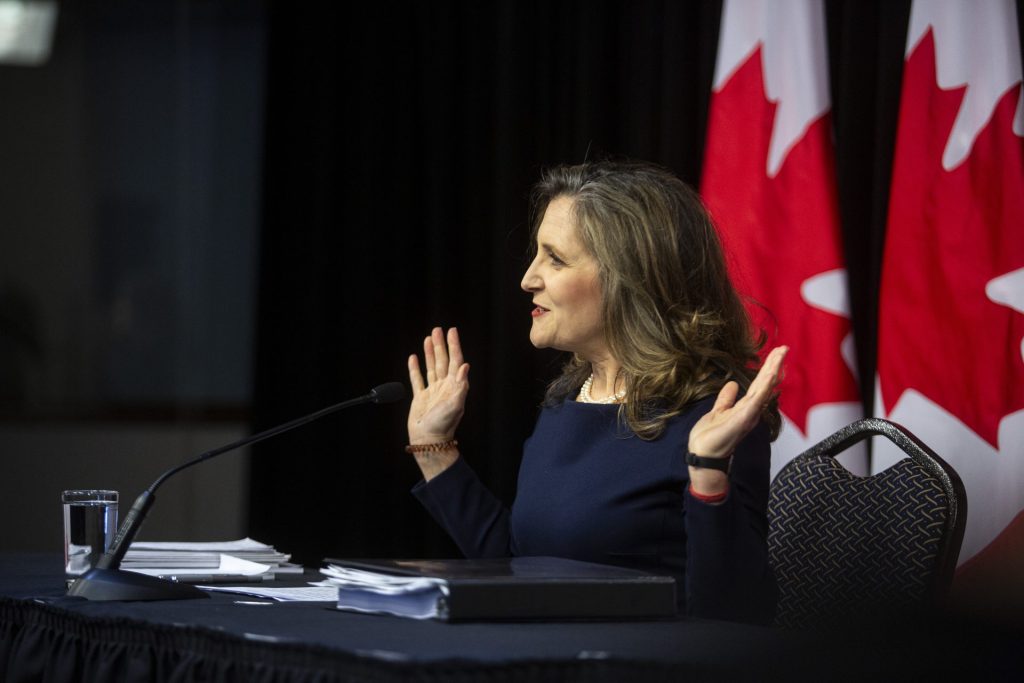Budget’s ‘slow rollout’ pharmacare funding leaves program vulnerable to change in governments, say policy experts

The timeline and funding for pharmacare laid out in last week’s federal budget points to a slow rollout plan, and a program that could easily be discontinued by a future government, say policy experts.
The April 16 budget set aside just shy of $1.5-billion for pharmacare over five years. That includes $59-million to be spent in the current fiscal year, with that amount set to grow in subsequent years. The budget allots $121-million for 2025-26, $358-million for 2026-27, and $477-million in both 2027-28 and 2028-29. The budget says this money will be used to “provide universal, single-payer coverage for a number of contraception and diabetes medications,” as part of the first phase of a national pharmacare program proposed in the government’s Pharmacare Act.
This is the first time the government has provided concrete numbers about how much money it plans to spend on launching pharmacare for those two categories of drugs, and when those dollars will flow. At a Feb. 29 press conference to officially launch the program, Health Minister Mark Holland (Ajax, Ont.) initially declined to provide a cost for the program’s first phase. He said it was quite possible there would not be any funding “booked in” to the budget for the coming fiscal year—even though he also said he hoped to sign deals with the provinces as quickly as possible, and to get medications into the hands of Canadians this year. Pressed by reporters, Holland said he had “a quantum” in his head which was “maybe $1.5-billion,” but that this could change. He did not indicate at that time over how many years that funding might be spread.

Now, with some concrete figures on the page, Michael Law, a professor at UBC’s School of Population and Public Health, said he is concerned it’s not enough to establish a durable program that could survive a change in government.
Law said he has been concerned that not enough elements of pharmacare would be put “in place quickly enough to insulate this program against being just eliminated the next election.”

“I don’t think that this amount of money is going to be large enough to prevent that potential outcome,” said Law, who holds the Canada Research Chair in Access to Medicines.
He said the money and timeline points to a “slow rollout,” and one that will see the federal government looking to the provinces to fund a large portion of the coverage as deals are negotiated.
Law said even the $477-million in the program’s fourth and fifth year would not come close to covering the drug costs incurred by the estimated 3.7 million Canadians with diabetes, even before getting to the coverage for contraceptives.
“With those amounts in the later years, if you didn’t fund contraception at all, the subsidy here would be about $120 a person.” He added that the number of Canadians with diabetes would grow by the time.
For patients with type 1 diabetes, he said drugs and supplies cost thousands annually, meaning that the federal government must be planning on asking provinces to pick up a large share of the costs. It also means it is unrealistic to think there is enough funding in the early years to achieve deals with all 13 provinces and territories.
The Hill Times reached out to Holland’s office with questions about whether there was enough funding to cover the costs associated with contraceptives and diabetes medication, and whether Ottawa will be counting on the provinces to inject additional cash to make the program work.
Christopher Aoun, press secretary to Holland, called the pharmacare legislation “a giant step forward in delivering better health-care to Canadians.”
“Funding agreements with every province and territory will be different, as every jurisdiction already has varying levels of coverage for contraceptives and diabetes medication,” he said in the statement. “Negotiations will begin once the Pharmacare Act receives Royal Assent.”
Law noted that all provinces already offer some degree of drug coverage to various populations depending on factors such as age and financial need. Many of the programs also require a co-payment, unlike the first dollar coverage Ottawa is seeking to provide for contraceptives and diabetes medication. But this means there is some scaffolding upon which the government can build.
That’s why some provinces will be more natural allies when it comes to reaching initial deals. In particular, he pointed to British Columbia, which already offers universal coverage of contraceptives, and Manitoba, which has indicated it plans to do so. Those provinces may be more interested in coming to the table since they are already prepared to pay the full costs of offering universal coverage for contraceptives, said Law. However, they do not offer universal coverage for diabetes medications, so either Ottawa or those provinces would still need to put in additional money.
Law thinks Ottawa will have a harder time with a province like Ontario, because the amount of coverage it currently offers residents is much smaller, and—with its larger population size—the federal figures would likely not be enough to entice that province to the bargaining table.

Rosalie Wyonch, a senior health policy analyst at the C.D. Howe Institute, also observed this funding may not be sufficient to cover these two categories of medicines across Canada. She said the budget indicates Ottawa is “not really expecting this program to fully rollout within the next year.”
“I would be surprised if they were expecting that $59-million to actually go to drugs, as opposed to maybe working on the reports and the analysis and developing the formulary, and sort of doing all of that background work for what a future expansion might look like,” said Wyonch.
The pharmacare legislation, for example, outlines that within one year of its passage, the Canada Drug Agency is to deliver plans for a national formulary for drugs to be covered by a future expansion to other categories of medicines. She said the Liberals may be looking to fund some of that work.
However, Wyonch said, by the time that work is complete, it would be so close to the fixed election date in October 2025 that much of that work would be vulnerable to a change in government.
Liberals looking to ‘crawl before they run’: former Liberal staffer
Former Liberal Party staffer Muhammed Ali said the scope of the pharmacare funding suggests the Liberals are “realizing they need to first crawl before they run with this negotiation” with the provinces and territories.

He pointed to some of the text in the budget that accompanied the spending commitment, in which the government says new federal funding “will expand and enhance, rather than replace, existing provincial and territorial spending on public drug benefit programs.”
“Given there’s sort of a lot on their plate … they need to find some level of compromise,” said Ali, who is now a vice-president at Crestview Strategy. The intent is to give Canadians “some hope that the plan should actually get implemented in negotiations, considering the size and scope of it is not onerous”—unlike if the government had attempted to rollout a full national pharmacare program for all drugs, which would have cost at least several billions of dollars.
He said Ottawa will likely look to follow the model it used with childcare negotiations by trying to get the ball rolling with some friendlier provinces first.
Ali said if negotiations with provinces were to hit a snag Ottawa has some leverage. He pointed to the fact that the feds hold the keys to additional funding—not only for pharmacare, but also an array of transfer programs. He added that the political popularity of coverage for drugs, such as contraceptives, could also help the federal government to get some deals done.

Former Ontario Progressive Conservative staffer Carly Bergamini said that given the amount of work remaining with provinces and territories, it is “a pipe dream” for the Liberals if they are hoping to “show benefits before the 2025 election.”
“No one disagrees that Canadians deserve access to the medications that they need, but ultimately … nothing has been agreed to with the provinces and the territories,” she said. “There is still a lot of legwork that needs to occur in order to get medications… in the hands of Canadians,” said Bergamini, who previously served as director of communications to then-Ontario health minister Christine Elliott.
Bergamini, who is now director of EnterpriseHealth at the public affairs firm Enterprise Canada, said that if the Conservatives were to form a government after the next election, they would likely engage in a program review of all spending. However, because “this file is moving at this glacial pace,” it’s possible that “there won’t be anything to review at that time.”
For the Liberals, she said the politics of maintaining the NDP’s support to pass the budget is likely the biggest motivator for including pharmacare in the budget, rather than a realistic likelihood of achieving an impact with the program before the next election.
icampbell@hilltimes.com
The Hill Times






 LICENSING
LICENSING PODCAST
PODCAST ALERTS
ALERTS













